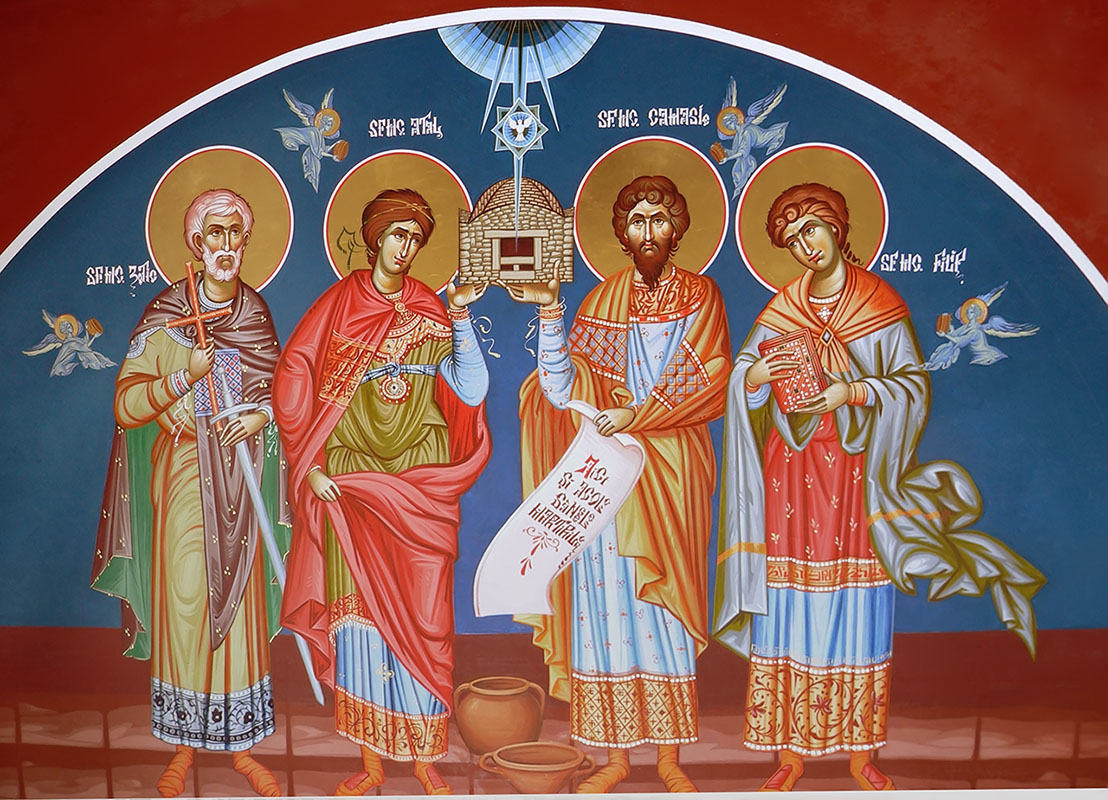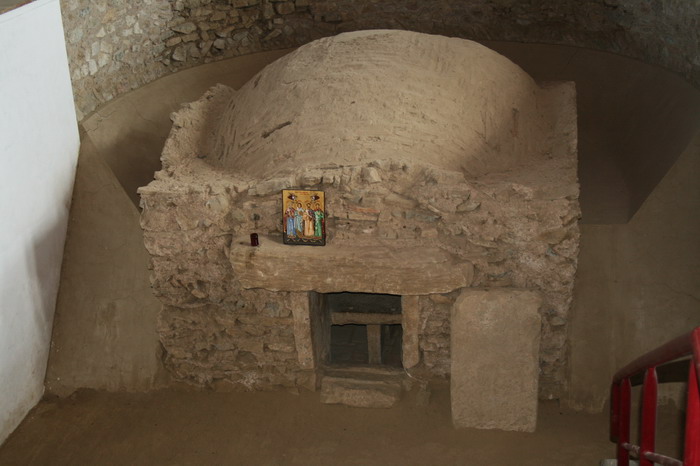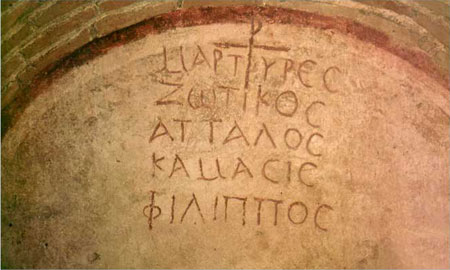The graves of Saints Zoticus, Atallus, Camisius and Philip were discovered in 1971.
Lesser Scythia (modern Romania), between the Danube and the Black Sea in the northeastern territory of the Roman Empire, was a place of exile or death for Christians who refused to worship the pagan gods. During the persecutions of Decius (249-251), Diocletian and Maximilian (284-305), and Licinius (308-324) thousands of people died there from cold, hunger, or torture. The relics of those who endured martyrdom because they openly proclaimed their faith in Christ were taken by Christians and buried in secret places. Accounts of the lives and sufferings of these holy martyrs were written and preserved so they would not be forgotten. When the persecutions ended, the relics were moved from their temporary resting places and placed in special crypts (martyria). Churches were built over these crypts, and the ruins of some of them may be seen today in Dobrogea.
In September 1971 a creek overflowed its banks near the village of Niculitsel in the county of Tulcea, revealing one of the oldest of these martyria.
The crypt, which is made of bricks, is divided into two rooms, one on top of the other. In the upper room, the relics of four martyrs were found in a single wooden coffin. All had been decapitated. The heads of three martyrs were found atop their necks, while the head of the fourth martyr was resting on his chest.
An inscription on the left wall reads: “Christ’s martyrs.” The names of the four martyrs (Zoticus, Attalus, Camasius, and Philip) were scratched into the right wall.
According to the records which have been preserved, these martyrs were tried by the Roman authorities of Noviodunum (modern Isaccea) and sentenced to death. They were beheaded, then buried at Niculitsel. The exact date of their martyrdom is not known. Some believe that they were slain early in the fourth century during the persecutions of Diocletian or Licinius. Others, however, think the four men may have been martyred north of the Danube during the persecution of the Gothic king Athanaric (370-372) against the Christians.
About a hundred fragments of the bones of two men (aged between 45-50) were found in the lower crypt. It is thought that they died during the persecution of Decius, and then their relics were reinterred at Niculitsel around 370-380. The names of these martyrs are not known.
The Syrian Martyrologion and St Jerome’s Martyrologion give June 4 as the date of the martyrs’ execution. The Synaxaria list these four martyrs along with six others: Eutychius, Quirinus, Julia, Saturninus, Ninita, Fortunio. Twenty-five others were also beheaded with these martyrs, but are not named.
The relics of these holy martyrs were moved to the Cocosh Monastery in 1971, where they are venerated by the faithful.




